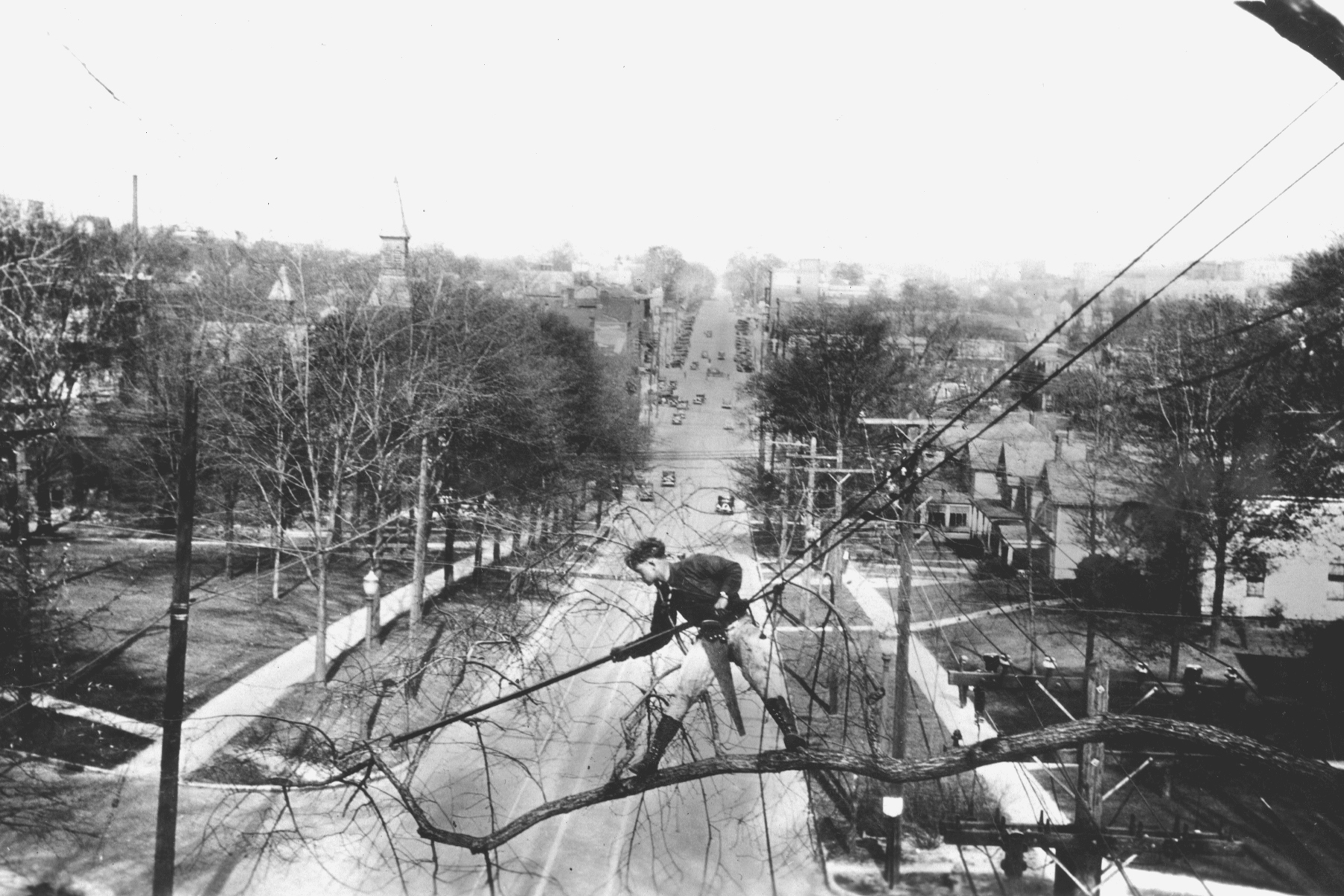Arborists have an established culture in today’s society, but it didn’t happen overnight — it took over 100 years to get where we are today. We’re continuing our look back on the pivotal moments of arborist growth throughout the decades. Be sure to check out the historical highlights we already covered in part 1 of this series.
1970s
The 1970s is regarded by arborist historians as a pivotal decade in the history of modern North American arboriculture. Within the daily grind of tree care work, the first few years of the 1970s were pretty much status quo. One could say that arboriculture was a proud profession with 100 years of tradition unhampered by progress. By the end of the decade, things would change significantly — for better and worse.
Spraying was big business going into the 70s and DDT became the most popular as well as one of the most infamous pesticides in history — until more regulations were put in place by the EPA and it was eventually banned in 2001. While the EPA was forcibly changing the pest control side of arboriculture, OSHA was making itself known to tree companies in another arena — safety citations. Though they didn’t win every case, safety regulations were increasingly becoming a part of the industry and arborists were officially on notice to focus on safety.
1980s
The 1980s brought a decade-long fight against Dutch elm disease (DED). DED is caused by a fungus affecting elm trees spread by elm bark beetles. Of the estimated 77 million elms in North America in 1930, over 75 percent had been lost by 1989.1 The disease created more tree removal work, and illustrated the need for more research and an appreciation of trees in urban and semi-urban environments.
1990s
The 1990s were a strong time of growth in the tree care industry, particularly with professional associations. With the elimination of peer-reviewed membership applications and a reduction in the price of dues, NAA memberships jumped from 338 in 1980 to 1,149 in 1990; 1,526 in 1995; and 2,633 by 1999.
Tree care professionals were also making advancements with technology and equipment. Companies were modernizing their operations with updated equipment, techniques and training in the field. Along with having more tools for the climber to use, there were more tools for production (on the ground). Chippers got bigger, better and more reliable. We saw bigger machines, better machines, enhancements in safety — equipment really started coming of age and people started spending money on equipment. Other major changes came in the area of climbing, where new braids, synthetic fibers and rigging tools were introduced to the industry by its best climbers along with the huge variety of products to choose from.
2000s
The Millennium brought fears of the dreaded Y2K computer bug — but of course nothing happened and business carried on as usual. In 2003, the National Arborist Association changed their name to the Tree Care Industry Association (TCIA). And with the new name came the creation of company standards and best practices which transitioned into the TCIA Accreditation program, and the Certified Tree Care Safety Professional (CTSP) program. These spawned other initiatives focused on safety in the industry, including the publication of the injury and fatality calendar that serves as a monthly reminder of safety needs and issues.
Present day
Today there are 217 accredited companies (463 branches) with 52 more currently working toward accreditation. The CTSP program, which launched in 2006, develops safety program managers who learn strategies and tactics for changing the safety culture of their organization. There are 1,827 CTSPs in North America, including 46 in Canada with 325 additional candidates enrolled in the program and working toward their credentials.
It’s been a long journey in arboriculture to get where we are now, but with every challenge came a moment of growth and a new focus in safety. While we continue to push forward with innovative technologies like the Vermeer Tree Commander® remote and the patented SmartCrush control system, it’s always humbling to remember and look back at where we began.
For more highlights in the history of tree care, read our previous post in this series.
This article was contributed to with the help of the Tree Care Industry Association (TCIA) historical archives. Visit the Tree Care Industry Association website for membership and business resource information.
For more tips and trends in starting your own tree care business, view more articles on the Tree care, rental and landscape blog.
This article and featured photo were contributed to with the help of the Tree Care Industry Association (TCIA) historical archives:
TCI Magazine November 2013
TCI Magazine October 2013
TCI Magazine September 2013
TCI Magazine August 2013
- New York Times, 5 December 1989, nytimes.com nytimes.com/1989/12/05/science/new-varieties-of-elm-raise-hope-of-rebirth-for-devastated-tree.html?sec=health&spon=&pagewanted=all.

